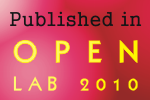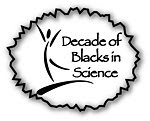This month marks the closing of the two-year celebration of International Polar Year 2007-2009. In this time international research teams have documented much about the health of the Arctic and Antarctic environments and the wildlife and people who call these precious biomes home.
Perhaps the best known and charismatic animal from the Arctic Polar region is the Polar Bear. It is the largest land carnivore (that also calls the ocean home); and it is endangered. The Polar Bears’ home, food, and way of life are threatened. If we don’t take a stand now, then there may be now Polar Bears in the wild later.
The two books I have read adn reviewed provide a general introduction to Polar Bears and their habits. They are appropriate for young readers and as read-along books for pre-schoolers. Title: Amazing Animals: Polar Bears
Title: Amazing Animals: Polar Bears
Publisher: Weigl Publishers Inc.
This trade book includes several breath-taking photos of polar bears in its natural habitat – the icy, cold arctic. It describes how polar bears live, hunt, eat, survive and interact with other polar bears. It also includes links to websites about Arctic and Polar Bear conservation. I especially enjoy materials that give students and families the opportunity to further explore an interesting topic.

Title: Baby Polar Bear
Nature Babies Series
Author: Aubrey Lang
Photographer: Wayne Lynch
Publisher: Fitzhenry & Whiteside
The author provides some brief introduction to polar bears in general, but the focus is definitely baby polar bears. The narrative voice of this book reminds me of someone talking to very young children about the day-to-day activities of a pair of young polar bears. The close-up photos of these animals, including other polar wildlife such as walruses, arctic foxes and hares, are simply adorable. However, I am less impressed with the descriptions of animal behavior descriptions. The author isn’t inaccurate, but she does over-simplify some natural behaviors so much that it might confuse some bright and inquisitive students. This book is best read to pre-schoolers who may be less inclined to catch these generalizations
Synopsis by Powell Books:
Born at the beginning of the Arctic winter, a male and female polar bear stay in the den for a number of months before they are ready to venture out. But soon they must follow their hungry mother out on the dangerous journey to the sea ice, where she will hunt for food. It will be several years before the little ones will be good enough hunters to fend for themselves in the Arctic wilderness.






















No comments:
Post a Comment